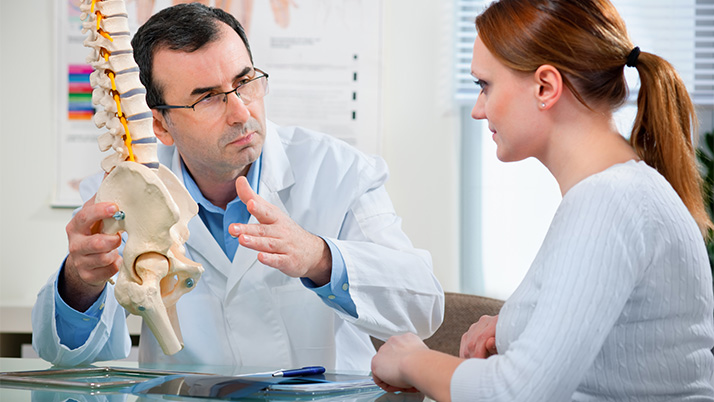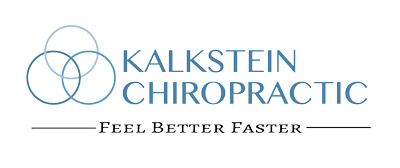What Happens During A Chiropractic Adjustment? (Answered By A Chiropractor)

You’ve probably heard of chiropractic adjustments but how do they actually work? What happens during a chiropractic adjustment that results in reduced pain? What makes a chiropractic adjustment so effective?
In this article, we explain exactly what happens to your body during a chiropractic adjustment that creates the immediate pain relief that our patients love. You’ll also learn about the ways your body responds to different types of stimuli and how we manipulate that to provide pain relief and improved range of motion.
What Happens During A Chiropractic Adjustment?
When we adjust somebody, we create a mechanical change or mechanical stimulus on a facet joint or disc material. Our bodies respond to two types of stimulus, mechanical stimulus and pain/chemical stimulus. When the mechanical stimulus is turned on, the pain stimulus is turned off.
So what is a pain stimulus or chemical stimulus? A chemical stimulus would include a drug or supplement that you take, a cut, a bug bite, a burn, or really any time when the tissue, and therefore the cells, are open to an outside chemical. Some examples of chemical stimuli that cause pain include irritated tissue that’s strained, a herniated or irritated disc, a pinched nerve, or torn or inflamed tissue from an injury.
What is a mechanical stimulus? Some examples of mechanical stimuli include massage therapy, exercise, vibration, dry needling, ultrasound, motion, or a chiropractic adjustment. A chiropractic adjustment works by flooding the body with mechanical stimulation. As a result of this mechanical stimulation, the pain or chemical stimulus is effectively turned off.
When you come in for a chiropractic adjustment, you’ll see that we move the joints in very specific ways to adjust you and relieve your pain. The way we move those joints has to do with the different ranges of motion. The typical joint range of motion goes from the active range of motion to the passive range of motion to the physiological range of motion all the way into the danger zone which is where injuries occur.
Your active range of motion in a given joint has the fewest number of mechanical receptors. The passive range of motion has more than the active range but the real magic lies in the physiological range which has the most mechanical receptors without getting into the danger zone and risking injury.
The active range of motion is all about movement so this is activated by things like running, jogging, and walking. Motion stimulates the mechanical receptors in the active range of motion which is why it usually feels good to exercise if you have a stiff back. That exercise allows you to activate the mechanical receptors in the active range of motion.
The passive range of motion has more mechanical receptors than the active range of motion which is why stretching feels so good on your joints. This is exactly why massage, dry needling, and soft tissue therapy work so well. When you tap into the passive range of motion you’re accessing more mechanical receptors so get more relief.
When we do a chiropractic adjustment, we skip active and passive and we go right in the physiological range of motion. A chiropractic adjustment stimulates many more mechanical receptors in the joint that could be stimulated by exercise or stretching or massage. This stimulation creates a flood of mechanical stimuli for those receptors to pick up on. All of this stimulation activates neurotransmitters that travel to the brain and tell it to relax your muscles. When your brain has all of this mechanical stimulation coming at it, it almost always shuts off the pain receptors associated with a chemical stimulus. This is why you’re in less pain after you get a chiropractic adjustment than you were before.
There is also a nerve branch that goes to your core stabilizers that actually stabilize your spine and when you get adjusted, the action potential threshold for these muscles is affected. The action potential threshold is the activation that's needed to turn a muscle on. That means what after you get a chiropractic adjustment, your core muscles actually turn on faster so they can stabilize and protect your spine as fast as possible.
All of these benefits happen after your chiropractic adjustment. Many of our patients come to us because they’re in pain and they leave feeling better because of these benefits that happen within the body. We often incorporate other therapies into a patient’s treatment plan to tap into the active and passive range of motion as well. These things include exercises, stretches, and soft tissue therapy which work to block pain and increase mechanical receptors.
The power of a chiropractic adjustment is the immediate effect it has on pain. This is only possible by turning on all of those mechanical receptors and flooding them with stimulus. In the article above, we demonstrate how this works as we adjust Jordan. We show how we take the joint to it’s the passive and active range and stretch it all the way until we find what we call the lockout. At this point, we apply a minimal thrust or a push in that area to take it into the physiological range.
A chiropractic adjustment focuses on taking joints into the physiological range and keeping them out of the danger zone. When you get in a car accident and have whiplash because your muscles didn’t have time to react, your joints stretch further than they should which gets you into the danger zone and causes injury. A joint can be pushed into the danger zone by any sort of trauma like a car accident or a lifting injury.
Adjustments may feel like they work wonders but there is some fascinating science behind what happens during a chiropractic adjustment. By flooding your body and brain with mechanical stimulation, we’re able to shut off the pain and give you immediate relief.
Are you ready to come in for a chiropractic adjustment so you can start feeling better faster? Click here to schedule your appointment for your chiropractic adjustment or call us at 410-296-7700.
IF YOU'D LIKE TO LEARN MORE ABOUT OUR NEWSLETTER, SUBSCRIBE BELOW
FOR MORE INFORMATION, FILL OUT THE FORM BELOW
OFFICE HOURS
Monday
7:30am - 12:00pm
2:00pm - 6:00pm
Tuesday
7:30am - 12:00pm
2:00pm - 6:00pm
Wednesday
7:30am - 12:00pm
2:00pm - 6:00pm
Thursday
7:30am - 12:00pm
2:00pm - 6:00pm
Friday
7:30am - 12:00pm
2:00pm - 6:00pm
Saturday
Closed
Kalkstein Chiropractic
200 East Joppa Road #300
Towson, MD 21286
(410) 296-7700

